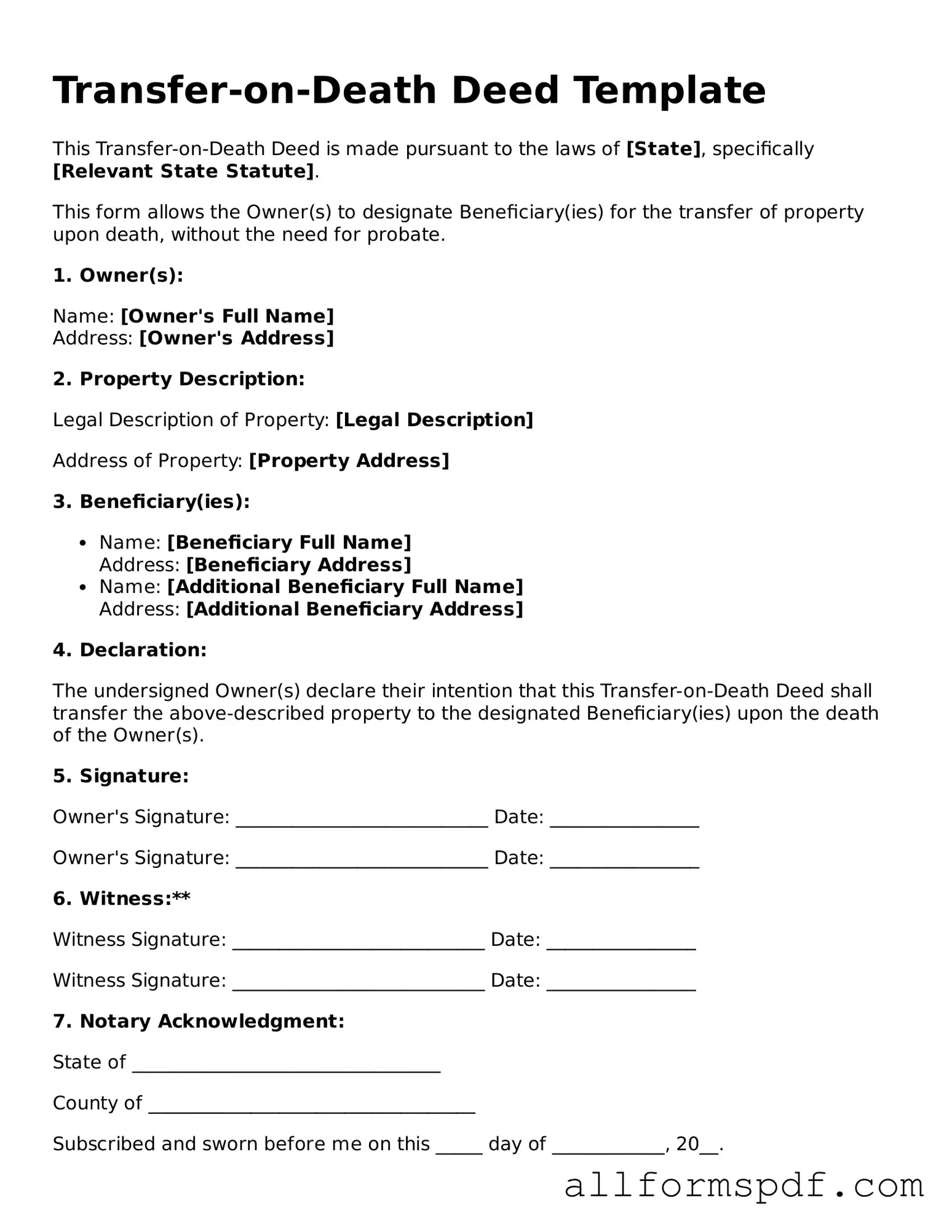Filling out a Transfer-on-Death Deed (TOD Deed) can be a straightforward process, but mistakes can lead to complications. One common error is failing to include all necessary information about the property. It’s essential to provide a clear description, including the property address and legal description. Omitting this information can create confusion and may even invalidate the deed.
Another frequent mistake involves not properly identifying the beneficiaries. It’s crucial to use full names and, if possible, include their relationship to you. Vague references like “my children” can lead to disputes later. Clear identification ensures that your wishes are honored and that there’s no ambiguity about who should inherit the property.
People often overlook the importance of signatures. The deed must be signed by the person transferring the property, and in some states, it may require witnesses or notarization. Skipping this step can render the deed ineffective. Always double-check the requirements in your state to ensure compliance.
In addition to signatures, the timing of the deed’s execution is vital. Some individuals mistakenly believe that simply filling out the form is enough. The deed must be filed with the appropriate county office before it can take effect. Delaying this step can result in the deed not being recognized when it’s needed.
Another common oversight is failing to consider tax implications. While a TOD Deed can help avoid probate, it may still have tax consequences. Not consulting with a tax professional can lead to unexpected financial burdens for your beneficiaries. Understanding these implications ahead of time can help you make informed decisions.
Finally, many people neglect to review their TOD Deed regularly. Life changes, such as marriage, divorce, or the birth of a child, can affect your beneficiaries. Keeping the deed up to date ensures that it reflects your current wishes. Regular reviews can prevent misunderstandings and ensure that your intentions are clear.
